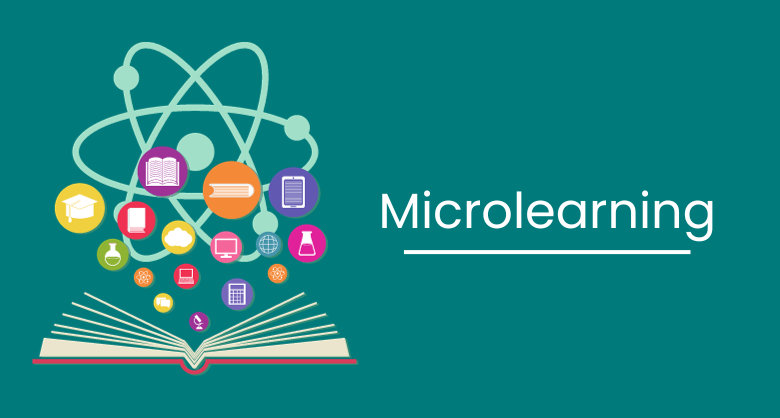
The way we learn has been changing rapidly over the last decade. Traditional e-learning platforms, once celebrated for making education more accessible, now face new competition from microlearning. Instead of long courses that require hours of focus, microlearning breaks education into short, digestible lessons. These bite-sized modules fit into the pace of modern life, where people are busy and attention spans are shorter. For students, professionals, and lifelong learners, microlearning has become a practical way to build skills without overwhelming schedules.
Traditional e-learning often relies on lengthy videos, dense readings, and structured modules that mimic classroom formats. While effective for some, many learners struggle to stay engaged for long stretches of time. Microlearning solves this by focusing on specific skills or concepts in just a few minutes. Learners can absorb information during commutes, lunch breaks, or even between meetings. The accessibility of this model explains why it’s growing fast and beating out older, less flexible platforms.
Why Learners Prefer Microlearning
One of the biggest reasons microlearning has gained traction is its ability to fit into daily routines. Instead of dedicating hours to an online course, learners can build knowledge step by step. This “snackable” style of education keeps learners motivated, as progress feels immediate and practical. More importantly, it helps with retention. Research shows that when people learn in shorter bursts, they’re more likely to remember what they studied compared to traditional formats.
Sandro Kratz, Founder of Tutorbase, has seen the value of breaking tasks into smaller parts.
“When we built Tutorbase, we focused on making scheduling and admin work as simple as possible for schools. By removing unnecessary complexity, our users cut their workload by 50 percent on average. I believe microlearning does the same for education—it cuts the noise and delivers what matters in short, focused steps. The result is that learners stay engaged and educators see better outcomes.”
This approach doesn’t just help students—it also helps educators and trainers. Teachers can design lessons that align with attention spans, and businesses can train employees more efficiently. Instead of pulling employees away for hours-long workshops, microlearning allows training to be integrated into the flow of work. That efficiency explains why companies and schools alike are making the switch.
The Cultural Shift Toward Shorter Learning
Beyond convenience, microlearning reflects broader cultural shifts. We live in a world where people consume information in short forms—whether through social media, podcasts, or videos. Learners are already used to engaging with content this way, so microlearning feels natural. It matches the rhythms of modern communication and helps people learn without disruption.
Yoan Amselem, Managing Director of the German Cultural Association of Hong Kong, explains how culture shapes education.
“In our programs, we’ve seen that students thrive when lessons are immersive but also broken into manageable parts. Long lectures can drain energy, but shorter, targeted sessions keep interest alive. We’ve applied this by designing cultural workshops that mix quick learning bursts with interactive activities. Microlearning is powerful because it respects how people actually live and learn today.”
This cultural fit is key. When learning methods reflect how people already process information daily, they’re easier to adopt and sustain. That’s why microlearning isn’t just a trend—it’s becoming a standard approach for both academic and corporate learning environments.
Better Results Through Personalization
Another advantage of microlearning is its ability to adapt to learners’ needs. With smaller, focused modules, it’s easier to personalize the experience. Learners can pick and choose topics that matter most to them, rather than sitting through long sessions where only part of the material is relevant. Personalization also makes it possible to revisit specific lessons when needed, reinforcing learning without requiring a full course review.
David Cornado, President of the French Teachers Association of Hong Kong, highlights how personalization makes a difference.
“As an educator, I’ve watched how students benefit from being able to focus on exactly what they need. In traditional classes, learners can feel lost if the pace is too fast or too slow. With microlearning, they can revisit small lessons until the concept clicks, which builds confidence. We’ve seen students improve faster because they’re learning on their own terms rather than being forced into rigid structures.”
Ramiro Lluis, Managing Attorney at Lluis Law, sees parallels between law and education when it comes to clarity.
“As a lawyer, I’ve spent years explaining complex legal ideas to clients who don’t have a legal background. The moments where I break issues into smaller, digestible parts are the moments when clients truly understand and feel empowered. That’s why microlearning resonates with me—it mirrors how people best process information in high-stakes situations. In both law and education, clarity and accessibility are what build confidence and trust.”
This flexibility is one of the main reasons microlearning is outperforming traditional platforms. By putting the learner at the center, it ensures that education is not only accessible but also effective. For schools and organizations, this means better outcomes and happier students or employees.
The Future of Microlearning
As technology advances, microlearning will only become more powerful. AI is already helping platforms recommend lessons, track progress, and adjust content based on individual performance. Gamification, another emerging feature, makes learning engaging by adding challenges, badges, and rewards. These features combine to create experiences that are not only effective but also enjoyable.
For institutions and businesses, the benefits go beyond learning outcomes. Microlearning reduces costs, saves time, and increases flexibility for both learners and educators. It also makes global learning more inclusive, allowing students and professionals from different backgrounds to engage on equal footing. With its adaptability and proven impact, microlearning is set to define the next generation of education.
Conclusion
Microlearning is reshaping education by offering a faster, smarter, and more engaging way to learn. Instead of overwhelming learners with long courses, it provides clear, focused lessons that fit into everyday life. The insights of experts like Sandro Kratz, Yoan Amselem, David Cornado, and Ramiro Lluis highlight why this approach resonates—it cuts complexity, respects cultural learning habits, and empowers personalization.
Traditional e-learning platforms aren’t disappearing, but their dominance is being challenged by this flexible model. As more schools, companies, and individuals embrace microlearning, education will become more accessible and effective. The lesson is clear: in a world where time and attention are precious, microlearning is proving that smaller really is better.


